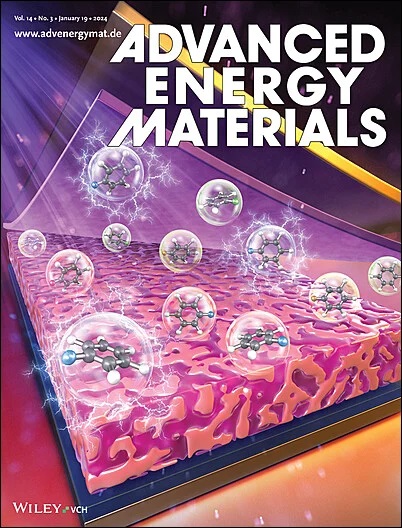Dual-Aspect Control of Lithium Nucleation and Growth with Hydroxyapatite and Liquid Crystal Polymers for High-Performance Lithium Metal Batteries
IF 24.4
1区 材料科学
Q1 CHEMISTRY, PHYSICAL
引用次数: 0
Abstract
Lithium (Li) metal is a promising anode material for next-generation high-energy-density batteries. However, safety concerns and the limited lifespan due to Li dendrite formation hinder its practical application. The complex dendrite formation process involves nonuniform nucleation and radial growth, requiring a holistic strategy to simultaneously regulate both processes. In this work, a dual-aspect control strategy is developed by designing a protective layer composed of hydroxyapatite (HA) and a liquid crystal polymer (LCP). Electrochemical, microstructural, and computational analyses revealed that HA provides homogenous Li0 adsorption sites, enhancing Li nucleation kinetics and uniformity. Meanwhile, the LCP self-assembles into cation-selective channels, promoting Li-ion diffusion and regulating growth direction. This dual-aspect control significantly improved Li plating kinetics and mitigated Li dendrite formation. Benefiting from this strategy, the symmetric cell achieved a critical current density of 5 mA cm−2 and maintained a lifespan of 500 h at 3 mA cm−2. Furthermore, in Li–sulfur batteries, the cell exhibited exceptional high-rate cycling performance (>10 mA cm−2) with an average capacity decay rate of only 0.056% over 1000 cycles. These results highlight the effectiveness of dual-aspect control in suppressing Li dendrites and improving high-rate cycling stability.

用羟基磷灰石和液晶聚合物双向控制锂成核和生长,实现高性能锂金属电池
本文章由计算机程序翻译,如有差异,请以英文原文为准。
求助全文
约1分钟内获得全文
求助全文
来源期刊

Advanced Energy Materials
CHEMISTRY, PHYSICAL-ENERGY & FUELS
CiteScore
41.90
自引率
4.00%
发文量
889
审稿时长
1.4 months
期刊介绍:
Established in 2011, Advanced Energy Materials is an international, interdisciplinary, English-language journal that focuses on materials used in energy harvesting, conversion, and storage. It is regarded as a top-quality journal alongside Advanced Materials, Advanced Functional Materials, and Small.
With a 2022 Impact Factor of 27.8, Advanced Energy Materials is considered a prime source for the best energy-related research. The journal covers a wide range of topics in energy-related research, including organic and inorganic photovoltaics, batteries and supercapacitors, fuel cells, hydrogen generation and storage, thermoelectrics, water splitting and photocatalysis, solar fuels and thermosolar power, magnetocalorics, and piezoelectronics.
The readership of Advanced Energy Materials includes materials scientists, chemists, physicists, and engineers in both academia and industry. The journal is indexed in various databases and collections, such as Advanced Technologies & Aerospace Database, FIZ Karlsruhe, INSPEC (IET), Science Citation Index Expanded, Technology Collection, and Web of Science, among others.
 求助内容:
求助内容: 应助结果提醒方式:
应助结果提醒方式:


